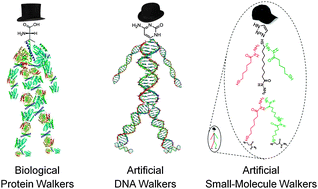This month sees the following articles in ChemSocRev that are in the top ten most accessed:-
C-H functionalization logic in total synthesis
Will R. Gutekunst and Phil S. Baran
Chem. Soc. Rev., 2011, 40, 1976-1991, DOI: 10.1039/C0CS00182A, Critical Review
Graphene nanosheet: synthesis, molecular engineering, thin film, hybrids, and energy and analytical applications
Shaojun Guo and Shaojun Dong
Chem. Soc. Rev., 2011, Advance Article, DOI: 10.1039/C0CS00079E, Critical Review
Cyclodextrin-based inclusion complexation bridging supramolecular chemistry and macromolecular self-assembly
Guosong Chen and Ming Jiang
Chem. Soc. Rev., 2011, Advance Article, DOI: 10.1039/C0CS00153H, Tutorial Review
Applications of advanced hybrid organic-inorganic nanomaterials: from laboratory to market
Clément Sanchez, Philippe Belleville, Michael Popall and Lionel Nicole
Chem. Soc. Rev., 2011, 40, 696-753, DOI: 10.1039/C0CS00136H, Critical Review
Transition-metal catalyzed oxidative cross-coupling reactions to form C-C bonds involving organometallic reagents as nucleophiles
Wei Shi, Chao Liu and Aiwen Lei
Chem. Soc. Rev., 2011, Advance Article, DOI: 10.1039/C0CS00125B, Critical Review
Microporous magnets
Pierre Dechambenoit and Jeffrey R. Long
Chem. Soc. Rev., 2011, Advance Article, DOI: 10.1039/C0CS00167H, Critical Review
Recent progress in hybrid materials science
Clément Sanchez, Kenneth J. Shea and Susumu Kitagawa
Chem. Soc. Rev., 2011, 40, 471-472, DOI: 10.1039/C1CS90001C, Editorial
Biomimetic smart nanopores and nanochannels
Xu Hou, Wei Guo and Lei Jiang
Chem. Soc. Rev., 2011, Advance Article, DOI: 10.1039/C0CS00053A, Critical Review
Direct Sp3 a-C-H activation and functionalization of alcohol and ether
Shu-Yu Zhang, Fu-Min Zhang and Yong-Qiang Tu
Chem. Soc. Rev., 2011, 40, 1937-1949, DOI: 10.1039/C0CS00063A, Tutorial Review
Fluorescent DNA-based enzyme sensors
Nan Dai and Eric T. Kool
Chem. Soc. Rev., 2011, Advance Article, DOI: 10.1039/C0CS00162G, Critical Review
Why not take a look at the articles today and blog your thoughts and comments below.
Fancy submitting an article to ChemSocRev? Then why not email us today with your suggestions.











 In their
In their